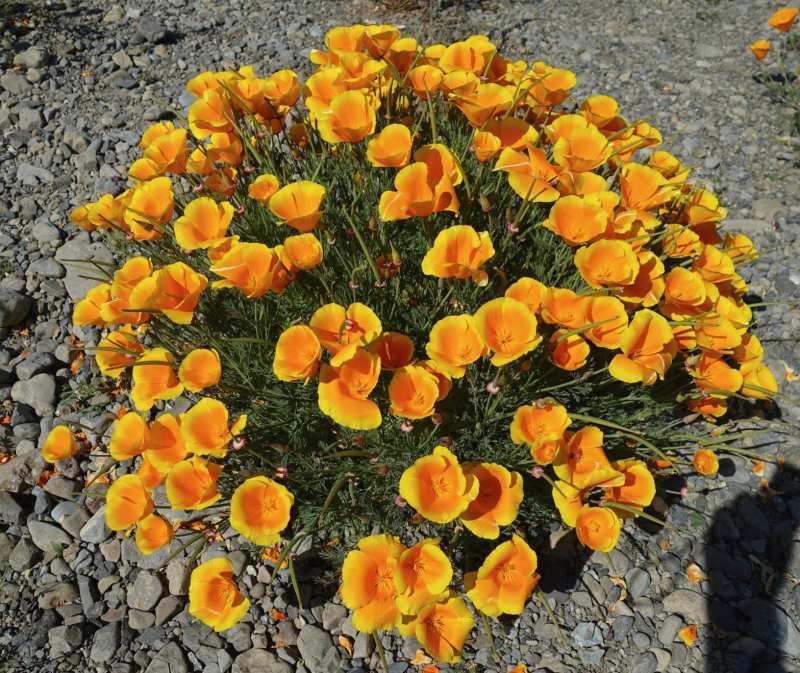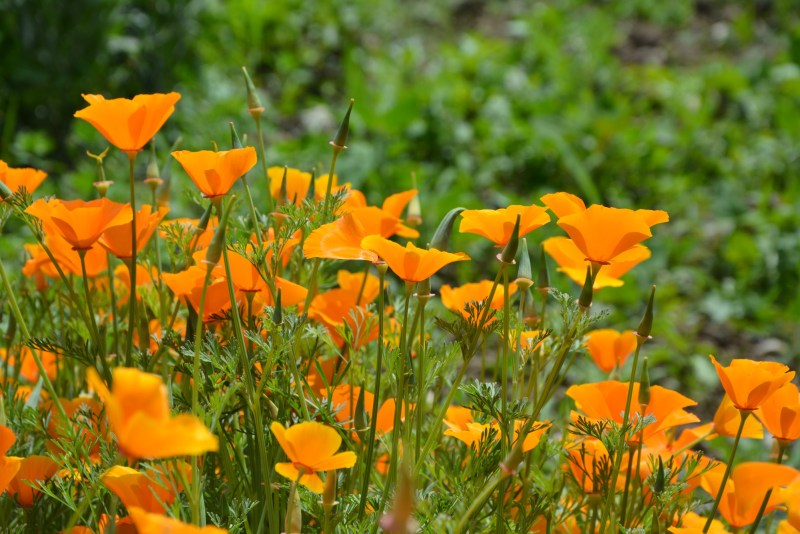Eschscholzia californica Cham Gold Poppy for amazing flowerbeds and gardens
Eschscholzia California Poppies are lovely additions to beds and borders, containers, rock gardens, naturalized plantings, and along paths or walkways.
The California poppy is native to grassy and open areas from sea level to 2,000 meters (6,500 feet) altitude in the western United States throughout California, extending to Oregon, southern Washington, Nevada, Arizona, New Mexico, and in Mexico in Sonora and northwest Baja California. It can grow 5-60 centimeters tall, with alternately branching waxy pale blue-green foliage. The leaves are divided into round, lobed segments. The flowers are solitary on long stems, silky-textured, with four petals, each petal 2-6 centimeters long and broad; their color ranges from yellow to orange, and flowering is from February to September. The petals close at night or in cold, windy weather and open again the following morning, although they may remain closed in cloudy weather. It is perennial in mild parts of its native range, and annual in harsher colder, and hotter climates.
Gentiana calycosa – A herbaceous perennial blue plant for your garden

- Generally pest and disease-free, California Poppies are low maintenance plants, grown as annuals in cool weather areas or as short-lived perennials in hardiness zones 8 – 10.
- Growing in loose, free-branching mounds up to 6-12 in. tall (15-30 cm) and 6-8 in. wide (15-20 cm), they feature single, semi-double or double silky flowers, up to 3 inches across (7 cm), in vibrant and bold colors including white, pink, red, orange, cream and yellow.
- The flowers close at night, when it is overcast, and when it is raining.
- California Poppies perform best in full sun, in sandy, poor to average, well-drained soils. Good drainage is essential! They are heat and drought tolerant and tolerate maritime exposure too.
Campanula rotundifolia or Harebell: A delicate and graceful bell flower in your pot and garden

How to grow
Cultivation
Will thrive in poor, well-drained soil but they need full sun for the flowers to open. Can be grown as a drought-tolerant pot plant. Good for exposed or coastal areas
Propagation
Propagate by seed sown in succession from mid-spring onwards
Suggested planting locations and garden types
- Cottage and informal garden
- Coastal
- Gravel garden
- Rock garden
- Cut flowers
- Flower borders and beds

Pruning
Cut back after flowering
Pests
Generally pest-free
Diseases
Generally disease-free

- California Poppies are lovely additions to beds and borders, containers, rock gardens, naturalized plantings, and along paths or walkways.
- They may be grown from seeds or live plants. Sow seeds outdoors after all danger of frost has passed or indoors 2-3 weeks prior to the last spring frost date. In hardiness zones 6-10, seeds may be sown in fall.
- Deadhead spent flowers to encourage new blooms. If the flower heads remain, the poppies will self-seed without becoming invasive.
- Native to the United States and Mexico. This plant may become weedy or invasive in some regions or habitats and may displace desirable vegetation if not properly managed.
Lobelia: An amazing flower for pot and garden






























2 comments
OMG! these flowers are soo pretty, really flowers is the best creation of god, its true, now my mind is totally fresh to see this blog, thanks for the satisfying post dear,
[…] Eschscholzia californica Cham Gold Poppy for amazing flowerbeds and gardens […]
Comments are closed.